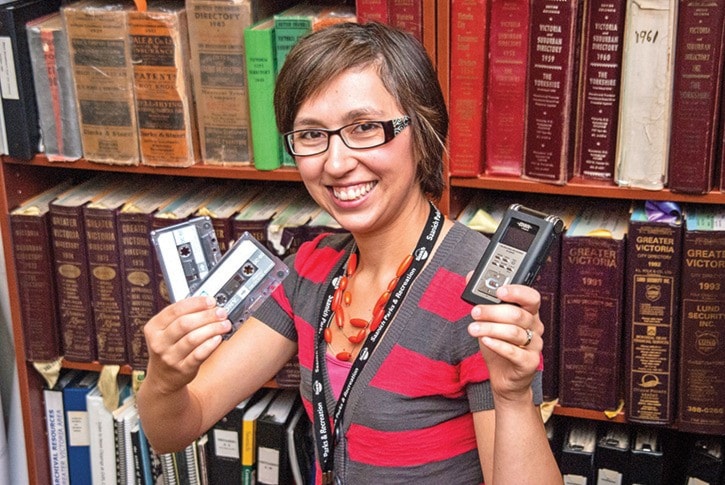It's difficult to imagine what life in Saanich was like 100 years ago. While the municipal archives has century-old legal documentation around property ownership and a great trove of aging photographs, the municipality has spent the better part of 36 years capturing the undocumented stories from the people that helped build the municipality.
The Saanich Oral History Project, which began in the late 1970s, has seen archivists sit down and record interviews with Saanich pioneers, longtime residents, municipal employees and politicians about their experiences in the municipality.
“Archival material is great and it gives us so much, however it doesn't always give you these personal tidbits of knowledge that wouldn't otherwise be anywhere except for someone's personal memories,” said archives specialist Sonia Nicholson.
On July 5, 1977, Saanich archivist Louise Ditmars sat down with former Mayor Les Passmore. He served as mayor (or reeve, as the position was called in 1941) for one year, but spent a total of 37 years on council.
“(Saanich has) changed to a very a great degree because in those days the roads were just dirt roads, the ditches were all open, we had no sewers, no sewers anywhere in Saanich, all septic tanks. And, well, it was pretty rural, as was all Saanich at that time,” Passmore said in his interview at age 78 of his memories of the 1930s.
His oral history touches on his memories of the politics of bringing a sewer system into Saanich, abolishing a municipal ward system and the transition from wooden to concrete sidewalks.
“It helps paint a more complete pictures of Saanich. It adds to our knowledge base and helps fill in those details about our history,” Nicholson said.
Archivists have recorded some 240 interviews over the years, and are always looking for more Saanich residents to offer their memories of change.
“Saanich recognized that a lot of the municipality's early history wasn't written down, but was remembered by the people who had lived it – many of whom were getting on in years,” said archivist Caroline Duncan. “As a result, an oral history program was started … to record these memories for the future.”
Originally, interviews were recorded on cassettes and then transcribed. Now Nicholson and fellow archivists record interviews digitally and upload them to Saanich's oral history computer at the archives, inside the Centennial library branch.
“I love the personal memories: the holidays, the family traditions and how different they are from now, the values, how they've changed. The social history is what i'm interested in,” Nicholson said. These experiences, only shared through the Oral History Project, are all aspects of Saanich life that wouldn't have been otherwise documented.
The archives also periodically receives donations that help add to the Oral History Project, such as the recent acquisition of radio interviews with former Saanich police chief Burt Pearson from the mid-1960s.
While Nicholson says there are no long-term plans for the all the interviews, Saanichites can come to the archives and listen to (or read transcripts) from interviews conducted over the last 36 years. Interview subjects range from family history and family traditions, to work or neighbourhood history.
Nicholson hopes to find more Saanich residents who are willing to share their memories – historical or anecdotal – of living in the municipality over the years.
Anyone interested in participating in the Saanich Oral History Project can contact Nicholson at sonia.nicholson@saanich.ca.
kslavin@saanichnews.com
